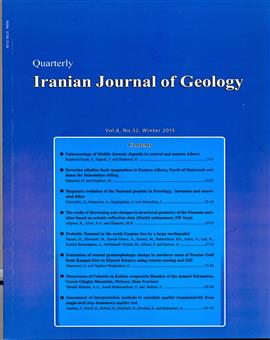Assessment of interpretation methods to calculate aquifer transmissivity from single-well step drawdown aquifer test
Subject Areas :F. Asadian 1 * , راحله Hatefi 2 , بهروز اعتباری 3 , بهزاد Delkhahi 4 , K. Khodaei 5 , علی اکبر شهسواری 6
1 -
2 -
3 -
4 -
5 -
6 -
Keywords: Single-well test Well-lossTransmissivityAquifer,
Abstract :
Since the measured well drawdowns in a single well test does not reflect the aquifer head loss and covering linear and nonlinear well losses, the calculations based on the observed head loss from a pumping well, cannot get a precise estimate of the hydrodynamic parameters of the aquifer. But when an inexpensive and rapid estimation of aquifer transmissivity is required, using the collected data from a single pumping well is amongst the attractive options. Several methods for estimating borehole loss components has been proposed by various researchers. In this study, methods proposed by Eden-Hazel, Hantush-Biershenk, Kasinow, Miller-Weber and Karami-Younger; suggesting to calculate well loss component (CQn) were assessed to determine the transmissivity of the aquifer using measured head losses from both the pumping well and the adjacent piezometer from some aquifer tests conducted on a number of exploration wells of Khorasan (Razavi and Southern) provinces. The calculated well loss components using Eden-Hazel, Hantush-Biershenk, Kasenow and Miller-Weber methods has a significant difference to the simulated well losses using piezometric data. Karami-Younger method has been able to calculate the CQn value more accurately, about 25% to the simulated value. However, an accurate CQn estimate did not necessarily concluded to an acceptable aquifer transmissivity calculation. In the other words, the results of implementation of this method is more sensitive in sediments with high permeability and lower well losses.

